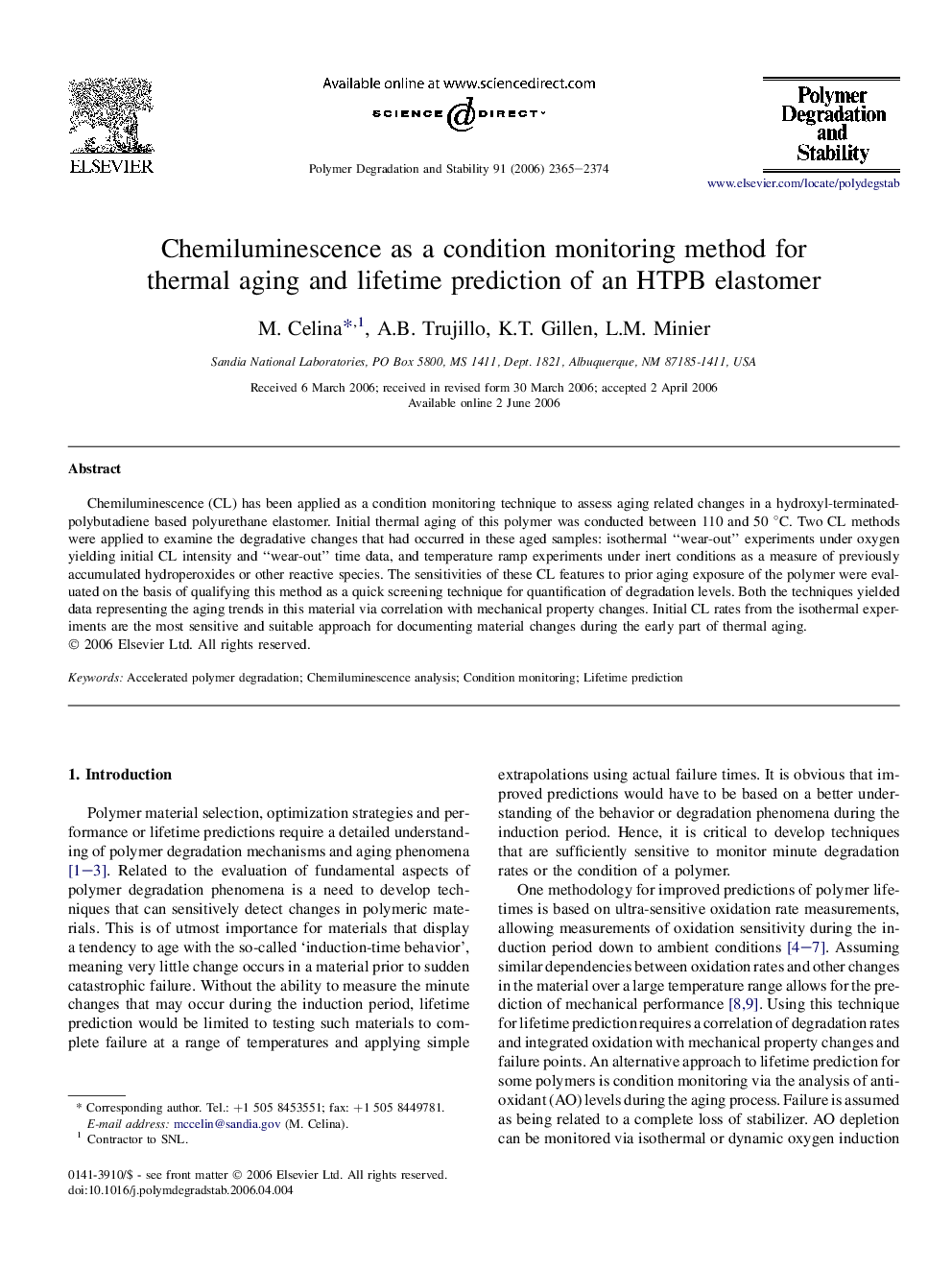| Article ID | Journal | Published Year | Pages | File Type |
|---|---|---|---|---|
| 5205180 | Polymer Degradation and Stability | 2006 | 10 Pages |
Abstract
Chemiluminescence (CL) has been applied as a condition monitoring technique to assess aging related changes in a hydroxyl-terminated-polybutadiene based polyurethane elastomer. Initial thermal aging of this polymer was conducted between 110 and 50 °C. Two CL methods were applied to examine the degradative changes that had occurred in these aged samples: isothermal “wear-out” experiments under oxygen yielding initial CL intensity and “wear-out” time data, and temperature ramp experiments under inert conditions as a measure of previously accumulated hydroperoxides or other reactive species. The sensitivities of these CL features to prior aging exposure of the polymer were evaluated on the basis of qualifying this method as a quick screening technique for quantification of degradation levels. Both the techniques yielded data representing the aging trends in this material via correlation with mechanical property changes. Initial CL rates from the isothermal experiments are the most sensitive and suitable approach for documenting material changes during the early part of thermal aging.
Related Topics
Physical Sciences and Engineering
Chemistry
Organic Chemistry
Authors
M. Celina, A.B. Trujillo, K.T. Gillen, L.M. Minier,
